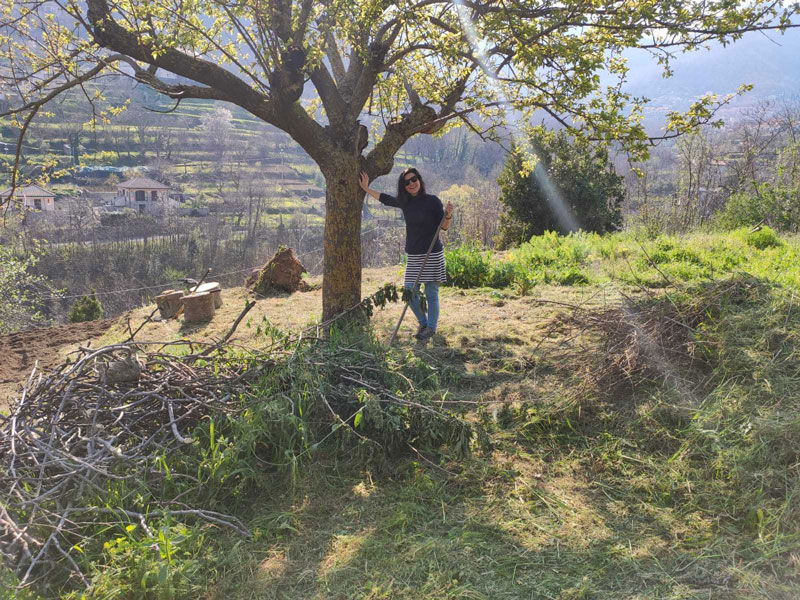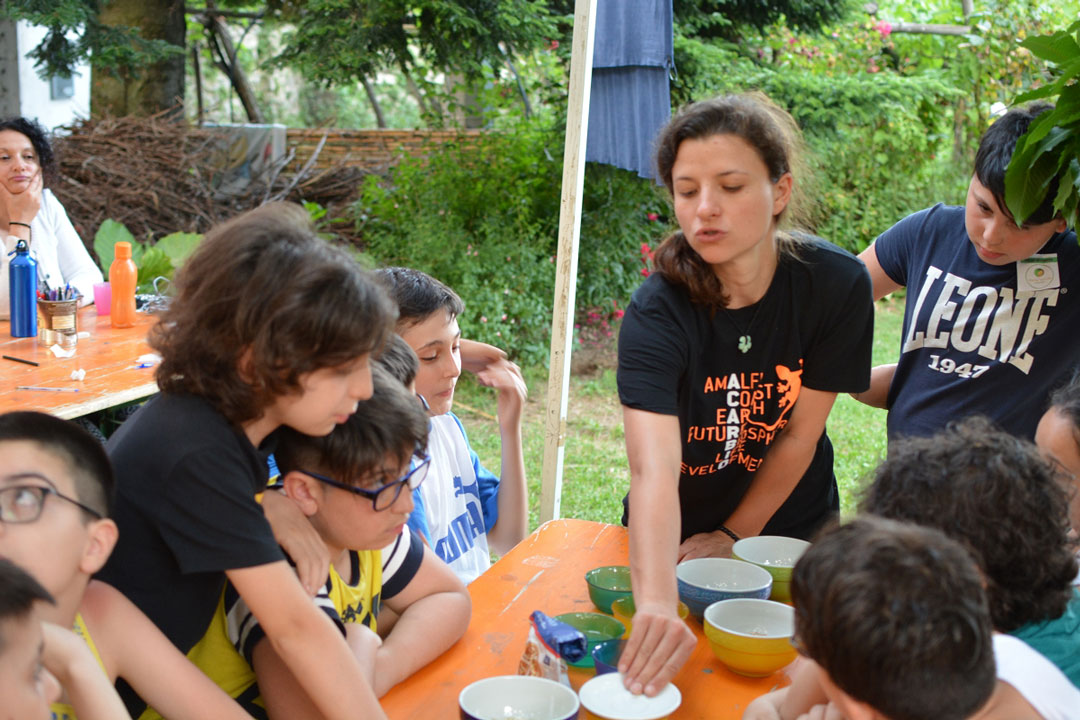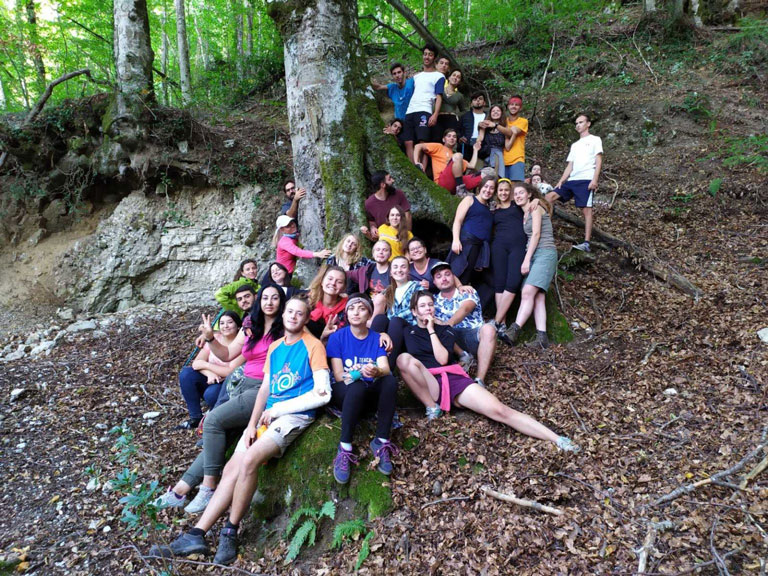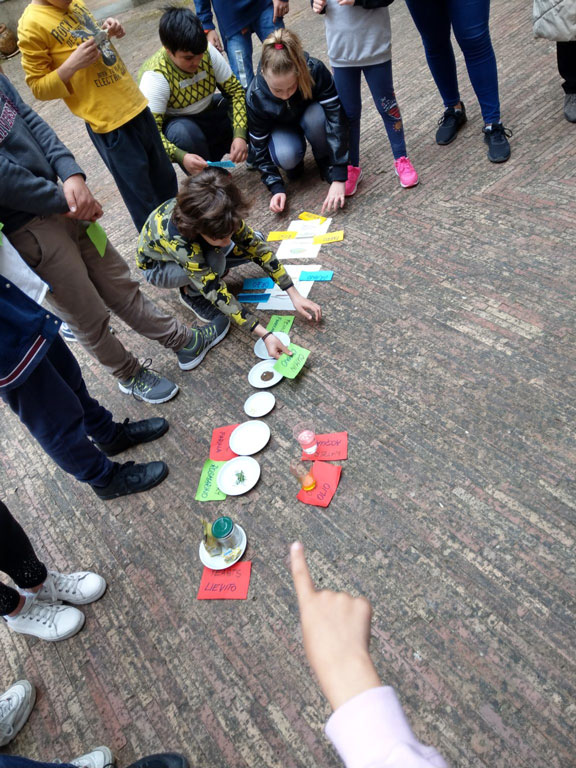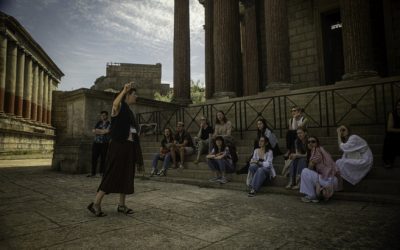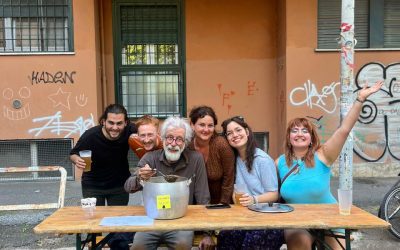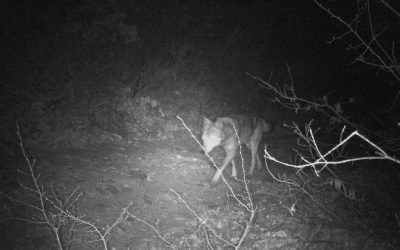Education
One year as an ESC volunteer in Tramonti, Southern Italy
Austria
Austria
Long term volunteering
Written by Kornelia from Mozambique
It started in spring. Tramonti in spring is changeable: sometimes sunny and warm, sometimes green and flowery, sometimes sociable and extrovert, sometimes young and erratic – but sometimes also rainy, gray and grumpy. Tramonti is characteristic, and life in Tramonti is also characteristic.
Tramonti is in an unknown part of the well-known Amalfi coast in Southern Italy, near Naples and Salerno. “Tramonti” (“tra i monti” – “between the mountains” or “beyond the mountains”) lies along a valley towards the coast and thus between the sea and the mountains. It offers a variety of changing micro-climates, there are the famous sunny and coastal nearby, fragrant lemon slopes, there are the almost tropical-looking humid small side valleys, there are the steep mountain peaks even suitable for climbing, there are the little autumn-looking wine gardens and there are the Mediterranean bush forests. The entire Amalfi Coast remained due to its geography somewhat disconnected for many centuries and thus preserved a regionally typical biodiversity, both in nature as well as in the gardens and on the plates (agro-biodiversity, e.g. wine, tomatoes, lemons, apples and more). There you can find typical culinary and gastronomic traditions (a traditional pizza school, typical liqueurs, traditional bread, and much more) and ways of production.
The determining or characterising element of the Amalfi coast is the terraced landscape. The terraces were created around 500-1000 years ago in most cases at the management of monasteries and convents in order to gain space for agriculture. This led to a landscape full of maintenance-intensive infrastructure consisting of traditional dry-stone walls, ramparts, canals, stairways, wells and cisterns, gardens, fruits and vegetables, sheep and goats, food festivals, colourful houses and small artisanal production sites (bread, wine, limoncello, tomato sauce) along the slopes and valleys.
This cultural landscape is now enlisted under the UNESCO World Cultural Heritage Sites, but is also strongly threatened of decay because of inadequate use and preservation – and with it not only the landscape, but also the dry stone walls in their functions as ecosystems, habitat, home of biodiversity, but also local traditions, food productions and knowledge.
The Acarbio association based there is committed to the preservation of this landscape and the associated nature and traditions, and also organises activities with young people from all over the world on the subject. That’s exactly what the “Green up your future” project was about, in which I was allowed to participate. As a member of the Acarbio association, I worked on the various projects, above all I worked with young people – with the local students and with international participants in youth projects. Following the principle of non-formal learning, these were mostly various activities with children and young people on the subjects of environmental protection and nature conservation, communication in English and intercultural learning. Non-formal learning is primarily about play, action and participation. For example, we talked about bread as a food, cultural asset and environmental impact – and we baked bread naturally. This does not result in classic lessons, but rather a kind of ‘excursion’. I was also involved in many environmental campaigns, classic beach clean-ups and clean-ups in the forest (unfortunately this is still a much bigger topic than you’d like), and also with an old (and traditional) tomato Rarity “Re Fiascone” and the growing families on the field, behind the camera and on the computer. Less classic but all the more exciting, I was also involved in promoting, maintaining and documenting local traditions (food production, dance music and culture, terrace-style community gardens). And every day there was something new to discover about the people and the region.
And after spring? Tramonti in summer is always on the go and busy, working and going out. Life happens in the outside. This affects tourism and agriculture, the main economic sectors of the Amalfi Coast. We also had a lot of projects and activities during the summer – youth activities, volunteering and workshops. In autumn, Tramonti in autumn is colourful, harvesting and packing. Busy like summer, but more considerate or I would even say more grown up. And winter? Winter plans, prepares and repairs. In winter we talked a lot about the past year, documented, summarised, created new plans and wrote projects for the next year. And – as always – cooked a lot together.
After the harvest, the fruits of the work must also be enjoyed and celebrated.
In the ESC, we talked a lot about solidarity, solidarity as an action (quasi as support), or also as an attitude (in the sense of tolerance). On Google you can also find a lot about like-mindedness. In any case, all of this applies and are important basic requirements for participating in the ESC program.
After this experience, I would emphasise that solidarity is an emotional state as well as a mental state and arises above all where formerly strangers experience impressive moments together. If you are lucky, a very colourful community will grow out of it. It is not that you understand everything, it is rather a special appreciation and acceptance of the others despite differences. This is not always easy and requires a certain level of curiosity. However, it provides you with amazing experience, lovely and heart warming new friends and lasting change in the way you see the world. With this in mind, may personal tip for everyone who wants to undertake this experience – stay curious.
You can still join!
Want to have your own volunteer experience for peace?
Read more Voices of Volunteers

